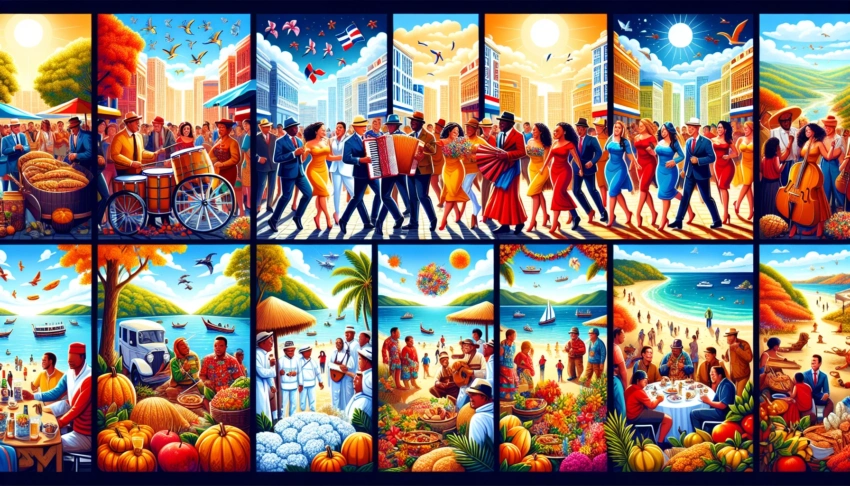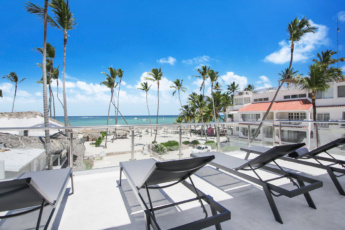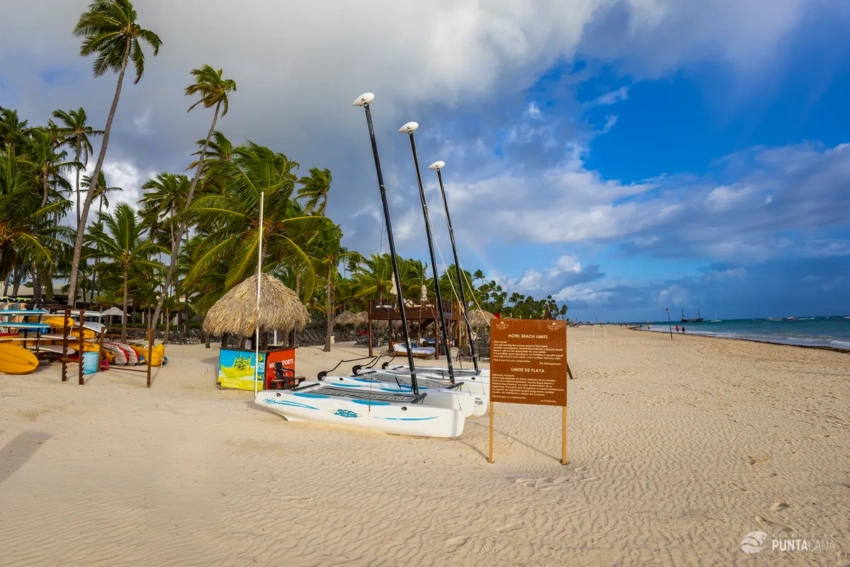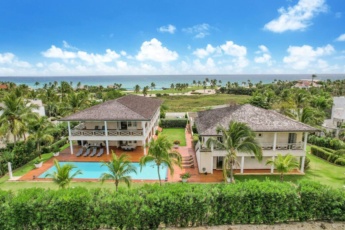Year-Round Dominican Events: Planning Your Stay Around Festivals and Celebrations
Exploring Dominican Republic’s Vibrant Festival Culture

Year-Round Dominican Events: Planning Your Stay Around Festivals and Celebrations
The Dominican Republic is a kaleidoscope of cultural expressions, with festivals and celebrations that are as diverse as they are colorful. These events offer a window into the soul of the nation, revealing a rich tapestry of history, culture, and communal spirit. From the thunderous beats of merengue to the solemn processions of religious observance, the festivals of the Dominican Republic invite you to experience a unique blend of heritage and modernity.
1. Historical Significance of Dominican Festivals
The festivals of the Dominican Republic are deeply rooted in the nation’s history, each with a story that echoes the past while shaping the present. Many of these celebrations date back centuries, linked to colonial times when Spanish, African, and indigenous Taino cultures began to intermingle. For instance, the famous Carnival is a celebration that traces its origins to the colonial period, embodying a blend of Taino, African, and European influences.
Religious festivals such as Semana Santa (Holy Week) and the Feast of Our Lady of Altagracia highlight the Catholic heritage brought by the Spanish colonizers. These events are not just religious observances but social gatherings that strengthen communal bonds. Through these festivals, stories of resilience, faith, and cultural fusion are passed down, preserving traditions for future generations.
2. Cultural Diversity and Influence on Celebrations
The Dominican Republic’s festivals are a testament to the country’s cultural diversity. The island’s strategic location in the Caribbean made it a melting pot of ethnicities and traditions. African rhythms and dances, brought by enslaved people, have heavily influenced local music and dance forms such as merengue and bachata. These elements are prominently showcased in music festivals that attract thousands of locals and tourists alike.
Furthermore, the influence of the indigenous Taino can be seen in some rituals and crafts present during these celebrations. The blending of these diverse cultural influences has given rise to unique festival traditions that reflect the nation’s vibrant cultural identity. Celebrations like the Guloya Festival in San Pedro de Macoris showcase African heritage and resilience, offering a different perspective on cultural festivities.
3. Impact of Festivals on Local Communities
Festivals in the Dominican Republic are more than mere celebrations; they are pivotal to community identity and cohesion. These events provide a platform for local artisans, musicians, and performers to showcase their talents, contributing to the preservation and promotion of cultural heritage. Additionally, festivals are significant economic drivers. They boost local economies by attracting tourists, which increases spending in sectors like hospitality, food, and transportation.
Beyond the economic benefits, festivals foster a sense of pride and belonging among community members. They offer opportunities for intergenerational exchange, where elders share stories and traditions with the younger generations. This cultural transmission helps maintain the community’s unique identity, ensuring that the traditions remain vibrant and relevant in an ever-changing world.
Carnival: The Heartbeat of Dominican Celebration
The Dominican Carnival is a vibrant and exhilarating celebration that encapsulates the spirit of the nation. It is a grand amalgamation of African, European, and Taino influences, creating a unique cultural tapestry that comes alive every year. This colorful festivity is not just a visual spectacle but a deep-seated tradition that reflects the Dominican Republic’s rich cultural heritage.

Punta Cana
1. Origins and Evolution of the Dominican Carnival
The Dominican Carnival traces its roots back to the 16th century, when Spanish colonizers introduced the concept of Carnival as a pre-Lenten celebration. Over the centuries, it has evolved dramatically, incorporating elements from African slaves and indigenous Taino cultures. These multicultural elements have transformed the Carnival into a distinctive celebration that is both a spectacle of color and a profound cultural expression.
Initially, the Carnival was a means for the colonizers to indulge before the austerity of Lent. However, as African slaves began to partake in the festivities, they infused it with their own music, dance, and costumes, resulting in a vibrant fusion of traditions. The Taino influence is evident in the masks and costumes, which often depict natural elements and mythical creatures from their folklore.
2. Key Locations and Events During Carnival
Carnival in the Dominican Republic is celebrated throughout the country, but certain locations stand out for their grand and unique celebrations.
Santo Domingo, the capital city, hosts a magnificent Carnival parade along the Malecón, where you’ll witness a dazzling array of floats, performers, and dancers. This parade is a kaleidoscope of colors, sounds, and movements that collectively tell the history and culture of the Dominican people.
La Vega is renowned for its Diablos Cojuelos (Limping Devils), who playfully chase spectators with their decorated whips. The La Vega Carnival is one of the oldest and most famous in the country, known for its elaborate costumes and lively atmosphere.
Santiago offers a distinct experience with its Comparsas, groups of performers who compete in dance and costume contests, showcasing creativity and cultural narratives. Each Comparsa tells a story, often reflecting social, political, or historical themes.
Notable Carnival Locations and Highlights
| Location | Main Attraction | Unique Feature |
|---|---|---|
| Santo Domingo | Main Parade | Floats and Cultural Narratives |
| La Vega | Diablos Cojuelos | Elaborate Devil Costumes |
| Santiago | Comparsas | Dance and Costume Competitions |
3. Tips for Visitors During Carnival Season
Attending the Dominican Carnival can be a thrilling yet overwhelming experience. Here are some practical tips to enhance your visit:
- Plan Ahead: Accommodation and travel arrangements should be made well in advance, as Carnival season sees an influx of tourists.
- Stay Safe: Be mindful of your belongings amidst the lively crowds. It’s advisable to carry minimal valuables and stay with your group.
- Embrace the Culture: Engage with locals and immerse yourself in the festivities. Try wearing traditional masks or costumes to feel part of the celebration.
- Capture the Moments: While it’s tempting to document everything, remember to put the camera down occasionally and experience the vibrant energy firsthand.
- Respect Local Customs: The Carnival is a deeply rooted cultural event. Understanding and respecting its significance is crucial for a fulfilling experience.
Our Best Carnival Experience Packages in Punta Cana
For those looking to immerse themselves in the heart of the Carnival celebrations, our carefully curated packages in Punta Cana offer an unmatched blend of excitement and convenience. Experience the festivities like never before with our exclusive offerings.

Luxury Villa Right on Los Corales Beach - With Heated Pool, Maid & Chef in Bávaro
from $2995 night Read more
Brand-New Oceanfront Luxury Cap Cana 10BR Villa - Private Beach, Full Staff, Home Theater
from $9360 night Read moreMerengue Festival: A Celebration of Music and Dance
The Merengue Festival is not just an event; it’s a pulsating celebration of Dominican heritage, where music and dance unite to create an unforgettable cultural experience. From the spirited sounds to the lively dance steps, merengue embodies the very soul of the Dominican Republic.

Punta Cana
1. History and Importance of Merengue
Merengue’s roots trace back to the mid-19th century, emerging as a symbol of national identity and pride. Initially met with resistance by the upper class due to its African influences and energetic style, merengue gradually gained acceptance and prominence, eventually becoming the Dominican Republic’s official dance. It embodies the fusion of African rhythms, European instruments, and Taino influences, creating a unique and vibrant musical genre that resonates with the Dominican spirit.
The significance of merengue extends beyond entertainment; it serves as a social glue, bringing together people from diverse backgrounds. The dance is often seen at celebrations, where its infectious rhythm encourages everyone to participate, fostering a sense of unity and joy.
2. Annual Merengue Festivals and Locations
Each year, the Dominican Republic hosts several merengue festivals that attract both locals and tourists. The most renowned among them is the Santo Domingo Merengue Festival, typically held in July. This event transforms the capital city into a vibrant stage where local and international artists perform, filling the streets with lively beats and colorful parades.
Another notable festival is the Puerto Plata Merengue Festival, which takes place along the picturesque Malecón. This festival not only showcases merengue but also features other traditional Dominican music styles, offering a comprehensive musical experience.
Key Merengue Festivals in the Dominican Republic
| Festival | Location | Month | Highlights |
|---|---|---|---|
| Santo Domingo Merengue Festival | Santo Domingo | July | Live performances, parades, dance contests |
| Puerto Plata Merengue Festival | Puerto Plata | October | Beachfront concerts, cultural exhibits |
These festivals are not just about music; they are a celebration of life and culture that offer an immersive experience into the Dominican way of life. Attending these events provides a deeper appreciation for the nation’s rich cultural tapestry.
3. How to Enjoy Merengue Like a Local
To truly savor the merengue experience, immerse yourself in the local way of life. Start by taking merengue dance lessons—many local dance schools offer short courses for beginners. This not only helps you enjoy the festivals more but also connects you with locals who are passionate about sharing their cultural heritage.
During the festivals, engage with the performers and fellow attendees. Dominicans are known for their warm hospitality, and participating in the dances and celebrations can lead to unforgettable memories and friendships. Be sure to sample traditional Dominican food and drinks available at festival stalls, such as mofongo and mamajuana, to get a full taste of the local culture.
Our Best Ocean View Villa Rentals for Merengue Festival Visitors
Why not make your festival experience even more memorable by staying at one of our luxurious ocean view villa rentals? Located conveniently near Santo Domingo and Puerto Plata, these accommodations offer the perfect blend of comfort and accessibility to the festival venues. Enjoy stunning views, world-class amenities, and the vibrant atmosphere of the Dominican Republic right from your doorstep.

New Bávaro Beach Beachfront Condo for Rent - Stunning Ocean View, Housekeeper & Rooftop Terrace
from $811 night Read more
Private Cap Cana Caleton Villa with Large Pool, Ocean View, and Top Amenities
from $3120 night Read moreReligious Celebrations: Faith and Festivity
The Dominican Republic is a vibrant tapestry of faith and festivity, where religious celebrations play a pivotal role in shaping the cultural landscape. These events are not just about spiritual observance but are deeply intertwined with the nation’s identity, offering a profound insight into Dominican life.
1. Semana Santa: Holy Week Traditions
Semana Santa, or Holy Week, is one of the most significant religious events in the Dominican Republic. This solemn yet festive occasion marks the week leading up to Easter Sunday, with a series of religious ceremonies and traditional activities that reflect the deep-rooted Catholic faith of the Dominican people. During this time, churches across the country hold special masses, processions, and reenactments of the Passion of Christ.
In cities like Santo Domingo and La Vega, you can witness elaborate processions featuring participants dressed as biblical figures. The streets come alive with the sounds of hymns, and the air is filled with a sense of reverence and anticipation. For those looking to experience Semana Santa, it’s essential to understand the local customs and respect the religious significance of the events.
Visitors are encouraged to observe quietly and participate respectfully, as these events are deeply meaningful to the local communities. It’s an opportunity to gain a deeper appreciation for the Dominican Republic’s spiritual heritage and its influence on cultural practices.
2. Dia de la Altagracia: Honoring the Patroness
The celebration of Dia de la Altagracia on January 21st honors Our Lady of Altagracia, the patroness of the Dominican Republic. This event holds a special place in the hearts of Dominicans and attracts thousands of pilgrims to the Basilica of Higüey, where the revered image of the Virgin Mary is housed.
On this day, the streets of Higüey are filled with devout believers who come to pay homage to the Virgin, seeking her blessings and protection for the year ahead. The celebration includes religious services, offerings, and a vibrant procession that creates a festive atmosphere. It’s a time for reflection, gratitude, and communal bonding, making it a must-experience event for those interested in the spiritual side of Dominican culture.
While attending Dia de la Altagracia, visitors should be mindful of local customs, such as dressing modestly and participating in activities with respect. This celebration is a unique opportunity to witness the intersection of faith and festivity, showcasing the profound impact of religion on Dominican life.
3. Christmas and New Year’s Festivities
Christmas in the Dominican Republic is a magical time, blending religious observances with cultural traditions that create a joyful and festive atmosphere. The season is marked by vibrant decorations, lively music, and a strong sense of community.
Dominicans celebrate Christmas with a series of events that begin in early December and culminate on Christmas Eve, known as Nochebuena. This is when families gather for a festive meal that includes traditional dishes like roast pork, pasteles en hoja, and a variety of sweets. Midnight mass, or Misa del Gallo, is a highlight of the celebration, drawing large crowds to churches across the country.
As the New Year approaches, the celebrations continue with parties, fireworks, and the traditional Año Viejo celebration, where effigies symbolizing the old year are burned to welcome the new one. This period is characterized by a spirit of joy and renewal, making it an ideal time for visitors to immerse themselves in Dominican culture.
To fully enjoy Christmas and New Year’s in the Dominican Republic, consider joining in local events, trying traditional foods, and experiencing the warmth and hospitality of Dominican families. These celebrations offer a unique blend of faith, culture, and community, providing a rich and memorable experience for all who partake.
Section 5: Lesser-Known Festivals Worth Attending
While the Dominican Republic is famous for its grand celebrations like Carnival and Merengue Festival, there is a treasure trove of lesser-known festivals that offer a more personal and intimate glimpse into the unique cultural tapestry of the nation. These festivals are often celebrated with equal fervor and provide visitors with an opportunity to experience local traditions in their most authentic form.
1. Guloya Festival: A Show of Resilience and Heritage
The Guloya Festival, celebrated in San Pedro de Macoris, is a vibrant manifestation of Afro-Dominican culture. Recognized by UNESCO as an Intangible Cultural Heritage, the festival showcases the resilience and creativity of the community through lively dance and music.
- Historical Roots: The Guloya Festival has roots in the 19th century when Afro-Dominican communities began to express their cultural identity through dance and music.
- Cultural Significance: The festival features the captivating Guloyas — dancers in brightly colored costumes — who perform to the rhythmic beats of drums, representing stories of freedom and cultural heritage.
- When to Visit: The festival is held annually on January 1st, coinciding with New Year’s celebrations, making it a fantastic way to start the year immersed in local culture.
2. San Juan Bautista Day: A Local Celebration
San Juan Bautista Day, primarily celebrated on June 24th in San Juan de la Maguana, is a vibrant local celebration deeply rooted in religious and cultural traditions.
- Religious Observance: The day honors Saint John the Baptist, with religious ceremonies held in local churches, followed by lively community celebrations.
- Traditional Activities: Locals participate in colorful parades, traditional music, and dance. A unique feature of the festival is the symbolic baptism in local rivers, representing spiritual renewal.
- Visitor Experience: Attendees can enjoy local culinary delights and crafts, offering a truly immersive experience in Dominican traditions.
3. Cultural Events Beyond the Main Festivals
Beyond the well-publicized festivals, the Dominican Republic is home to a plethora of cultural events that reveal the rich diversity of its traditions.
- Jazz Festival: Held in various cities like Sosúa, Cabarete, and Puerto Plata, the Dominican Republic Jazz Festival is a must-attend for music lovers, featuring world-class performances and workshops.
- Cultural Weeks: These are organized throughout the year, celebrating different aspects of Dominican heritage, from art and literature to culinary traditions, offering visitors diverse experiences.
- Film Festivals: The Dominican Global Film Festival, held in Santo Domingo, showcases both local and international films, providing insights into the country’s vibrant cinematic landscape.
Exploring these lesser-known festivals not only enriches your cultural understanding but also offers a chance to connect with the heart and soul of the Dominican people. Whether it’s the rhythmic pulse of the Guloya dancers or the solemn celebrations of San Juan Bautista Day, these events promise unforgettable experiences that go beyond typical tourist itineraries.
Planning Your Trip Around Dominican Festivals
Planning your trip around festivals in the Dominican Republic offers a unique opportunity to immerse yourself in vibrant cultural experiences. From the rhythmic beats of merengue to the colorful parades of Carnival, timing your visit around these events can transform your vacation into an unforgettable journey.
1. Best Times to Visit for Festival Enthusiasts
The Dominican Republic bursts with festivities throughout the year, making it a paradise for festival enthusiasts. However, understanding the seasonal flow of events can help you maximize your cultural experience. Carnival, which takes place in February, is one of the most spectacular times to visit. Not only will you experience the nation’s eclectic mix of African, European, and Taino traditions, but you’ll also witness the vibrant parades and energetic music that define this celebration.
For music lovers, the Merengue Festival in July is a must-visit. This event highlights the country’s national dance and music genre with electrifying performances along the Malecón in Santo Domingo. Meanwhile, those interested in religious traditions should consider visiting during Semana Santa (Holy Week), typically in March or April, to experience the country’s rich spiritual heritage.
- February: Carnival
- March/April: Semana Santa
- July: Merengue Festival
- August: Restoration Day Celebrations
- January: Dia de la Altagracia
2. Navigating Festival Logistics
Attending festivals in a foreign country requires thoughtful planning to ensure a seamless experience. Accommodations should be booked well in advance, as hotels near festival sites often fill up quickly. Websites like Booking.com and Airbnb can help locate suitable lodging options.
Transportation is another key aspect. Renting a car offers the flexibility to explore different festival locations, but be prepared for increased traffic during major events. Alternatively, local taxis and ride-sharing services like Uber are widely available. Always allow extra travel time to account for road closures and detours due to festivities.
Festival Logistics: Accommodations and Transportation
| Festival | Location | Accommodation Tips | Transportation Options |
|---|---|---|---|
| Carnival | Santo Domingo, La Vega | Book 6 months in advance | Car rental, Uber |
| Merengue Festival | Santo Domingo | Stay near the Malecón | Local taxis, walk |
| Semana Santa | Nationwide | Family-run hotels | Public transport, car rental |
3. Cultural Etiquette and Engagement Tips
Engaging respectfully with local traditions is essential for a fulfilling festival experience. Dominicans are proud of their cultural heritage, and visitors are encouraged to participate actively yet respectfully. Dress appropriately for each event—during religious festivities, modest attire is recommended.
When attending dance festivals such as the Merengue Festival, join in the dancing, but be mindful of personal space and local customs. Politeness is highly valued, so greet locals with a smile and attempt a few basic phrases in Spanish to show your effort.
Finally, remember to ask permission before taking photographs, especially during intimate or religious ceremonies. Engaging with locals by showing genuine interest in their culture often leads to enriching conversations and deeper connections.
Incorporating these tips into your travel plans will not only enhance your festival experience but also provide a deeper appreciation for the Dominican Republic’s rich cultural tapestry.
Frequently Asked Questions
What are some major festivals in the Dominican Republic that I should consider planning my visit around?
The Dominican Republic hosts several exciting festivals throughout the year. Some of the major ones include Carnival in February, Holy Week (Semana Santa) during Easter, and the Merengue Festival in late July to early August. These events offer a unique cultural experience filled with music, dance, and local traditions.
When is the best time of year to visit the Dominican Republic for festivals?
While festivals occur year-round, February is particularly vibrant due to Carnival festivities. Additionally, visiting in July and August allows you to experience the Merengue Festival. Each period offers a unique glimpse into the country’s rich culture.
What can I expect during the Dominican Carnival?
During the Dominican Carnival in February, you can expect colorful parades, lively music, and extravagant costumes. Each city has its own unique twist on the celebrations, with Santiago and La Vega being particularly noted for their grand festivities. It’s a time when locals and visitors come together to celebrate Dominican culture and heritage.
Are there any family-friendly events during these festivals?
Yes, many of the festivals in the Dominican Republic are family-friendly. For instance, Carnival often includes activities suitable for all ages, such as parades and cultural exhibits. It’s a great opportunity for families to enjoy the vibrant atmosphere while learning about local traditions.
Do I need to book accommodations in advance for festival times?
It’s highly recommended to book your accommodations well in advance if you’re planning to visit during major festivals. Popular events like Carnival and the Merengue Festival attract large crowds, and hotels can fill up quickly. Early booking ensures better availability and potentially better rates.
What should I wear to Dominican festivals?
Wear comfortable clothing suitable for warm weather, as many festivals occur outdoors. Light, breathable fabrics are ideal. If you plan to participate in evening events, consider slightly dressier attire, but still comfortable for dancing and mingling. Don’t forget sunscreen and hats for daytime activities.
Are there any safety tips for attending festivals in the Dominican Republic?
Yes, it’s important to stay aware of your surroundings, especially in crowded areas. Keep your belongings secure and be cautious of pickpockets. Stay hydrated and apply sunscreen during daytime events. It’s also wise to have a plan for transportation to and from the festival venues.
Always prioritize your safety and be aware of local travel advisories.
Can I participate in festival activities as a tourist?
Absolutely! Tourists are welcome to join in the festivities. You can enjoy parades, music, and dance along with locals. Participating in these events is a fantastic way to immerse yourself in Dominican culture and create memorable experiences.
